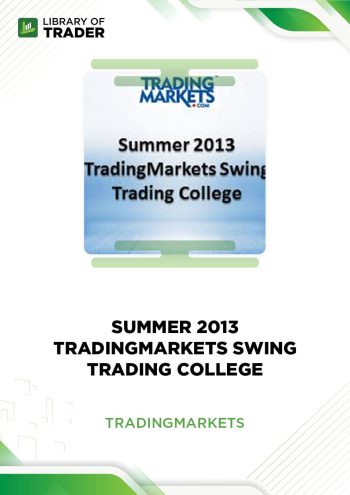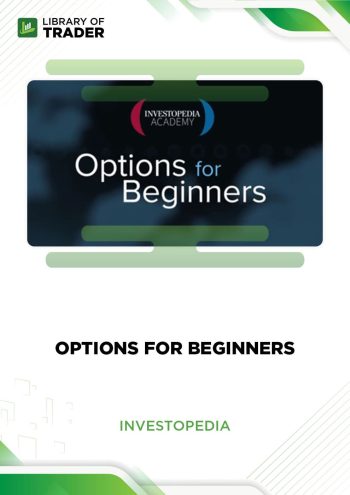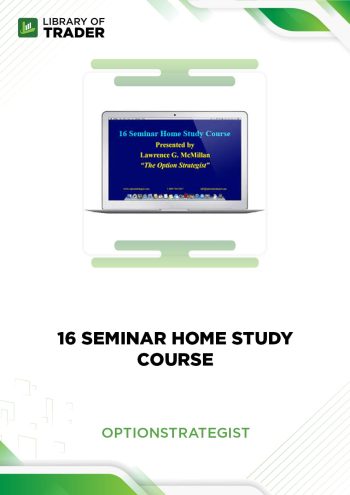Momentum Trading Strategies by Quantra Quantinsti instructs you on developing time-series and cross-sectional momentum strategies. Trading instruments that you can apply the frameworks include stocks, stock indexes, fixed income, and futures.
Course Overview
Momentum Trading Strategies by Quantra Quantinsti will help you create time-series and cross-sectional momentum strategies for stocks, stock indexes, fixed income, and futures contracts. You can learn how to evaluate time series, portfolio returns, and risks statistically. It also addresses how to construct and backtest momentum trading strategies.
Course Outline
- Introduction to the course
- What is momentum?
- Why does momentum exist?
- Introduction to python
- Financial market data and visualization
- Technical indicators
- Technical indicator strategy
- Live trading on blueshift
- Live trading template
- Types of momentum
- Time-series momentum
- Hurst exponent
- Correlation analysis
- Cross-sectional momentum
- Fundamental momentum
- Event-driven strategy
- Ranking factors for cross-sectional portfolio
- Treasury markets
- Momentum in futures
- Cross-sectional momentum strategy in futures
- Momentum crashes
- Automate trading strategies
- Risk management
- Python installation
- Course summary
What Will You Learn?
- Incorporate time series and cross-sectional momentum methods into stock, stock indexes, fixed income, and commodities futures.
- A solid grounding in time-series analysis of portfolio returns, risks, and momentum trading techniques.
- Understanding why momentum trading tactics can consistently outperform other trading methods.
- Stock, stock indices, fixed income, commodities, and futures markets can serve as testing grounds for developing and testing momentum strategies.
- Using a variety of performance metrics to examine the portfolio’s returns and risks.
- Determining a time series’ type, one may apply the Hurst exponent to it.
- Conveying futures market principles such as contango, backwardation, term structure & roll returns.
- Volatility decile portfolios should be subjected to crossover and breakout modeling.
- Using Blueshift, you may trade on paper, evaluate the results, and then execute your trades in real-time on the market.
Who Is This Course For?
The course assumes that students have a working knowledge of financial markets, including the buying and selling of stocks. Also, it needs a working grasp of equity, ETF, and futures markets.
The principles presented in this course may be acquired without a prior understanding of programming. To execute the tactics discussed, you must have a working knowledge of pandas and matplotlib.
Quantra Quantinsti
Please Login/Register if you want to leave us some feedback to help us improve our services and products.
RELATED COURSES
VIEW ALL-
 Insider’s Guide to Generating Income using Options Strategies Course (Oct 2014) – Simpler OptionsDOWNLOADInsider’s Guide to Generating Income using Options Strategies Course (Oct 2014) – Simpler OptionsUpdate 14 Nov 2022IntermediateDOWNLOAD
Insider’s Guide to Generating Income using Options Strategies Course (Oct 2014) – Simpler OptionsDOWNLOADInsider’s Guide to Generating Income using Options Strategies Course (Oct 2014) – Simpler OptionsUpdate 14 Nov 2022IntermediateDOWNLOADInsider’s Guide to Generating Income using Options Strategies Course (Oct 2014) by Simpler Options walks you through practical income strategies and methods to earn consistent returns.
Add to wishlist -
 Summer 2013 TradingMarkets Swing Trading College – Trading MarketsDOWNLOADSummer 2013 TradingMarkets Swing Trading College – Trading MarketsUpdate 10 Nov 2022All LevelsDOWNLOAD
Summer 2013 TradingMarkets Swing Trading College – Trading MarketsDOWNLOADSummer 2013 TradingMarkets Swing Trading College – Trading MarketsUpdate 10 Nov 2022All LevelsDOWNLOADSummer 2013 TradingMarkets Swing Trading College – Trading Markets provides you with the resources you need to help you stay on the right side of the market. You’ll learn in 10 hours what many traders spend over 10 years trying to “figure out” on their own.
Add to wishlist -
 New Foundations for Auction Market Trading – Alexander TradingDOWNLOADNew Foundations for Auction Market Trading – Alexander TradingUpdate 09 Nov 2022BeginnerDOWNLOAD
New Foundations for Auction Market Trading – Alexander TradingDOWNLOADNew Foundations for Auction Market Trading – Alexander TradingUpdate 09 Nov 2022BeginnerDOWNLOADNew Foundations for Auction Market Trading is a comprehensive guided workshop to walk you through every detail of developing your trade plan.
Add to wishlist -
 Investopedia – Options for BeginnersDOWNLOADInvestopedia – Options for BeginnersUpdate 09 Nov 2022BeginnerDOWNLOAD
Investopedia – Options for BeginnersDOWNLOADInvestopedia – Options for BeginnersUpdate 09 Nov 2022BeginnerDOWNLOADThe course Options for Beginners by Investopedia provides all of the necessary knowledge for an investor to understand how the options market operates and how to begin trading options.
Add to wishlist -
 16 Seminar Home Study Course – Option StrategistDOWNLOAD16 Seminar Home Study Course – Option StrategistUpdate 06 Nov 2022All LevelsDOWNLOAD
16 Seminar Home Study Course – Option StrategistDOWNLOAD16 Seminar Home Study Course – Option StrategistUpdate 06 Nov 2022All LevelsDOWNLOAD16 Seminar Home Study Course can aid traders in understanding a lot concerning the options market and how to properly execute it in a profitable manner.
Add to wishlist -
 Best Of Livestock – Timothy SykesDOWNLOADBest Of Livestock – Timothy SykesUpdate 17 Nov 2022All LevelsDOWNLOAD
Best Of Livestock – Timothy SykesDOWNLOADBest Of Livestock – Timothy SykesUpdate 17 Nov 2022All LevelsDOWNLOADThe Best of Livestock by Timothy Sykes walks you through practical stock trading techniques and strategies for techniques through real trading experiences and valuable tips.
Add to wishlist




Reviews
There are no reviews yet.